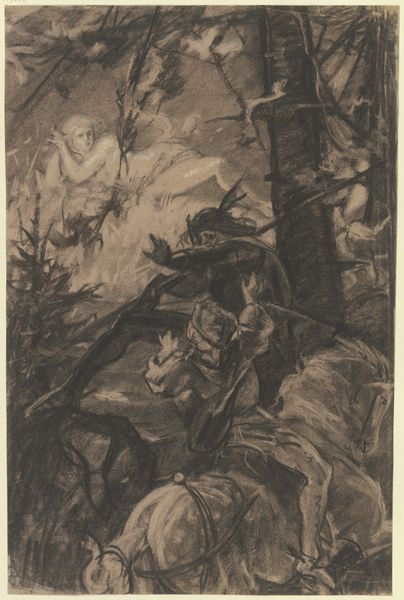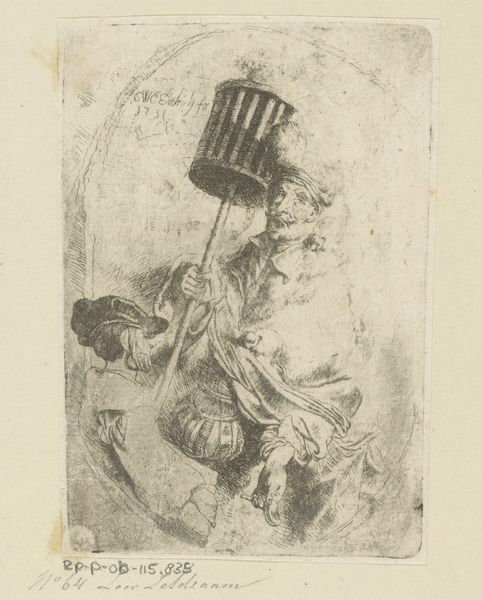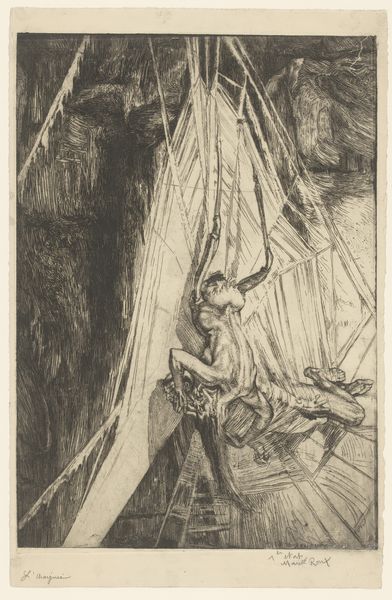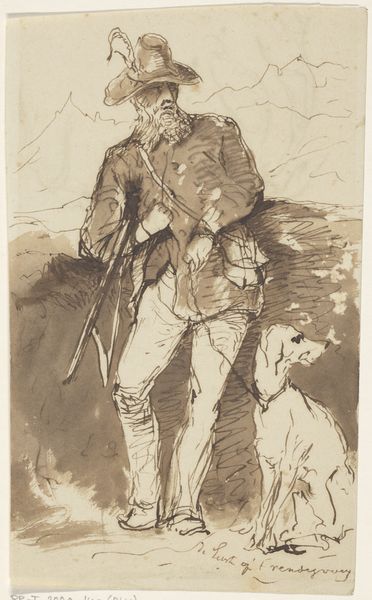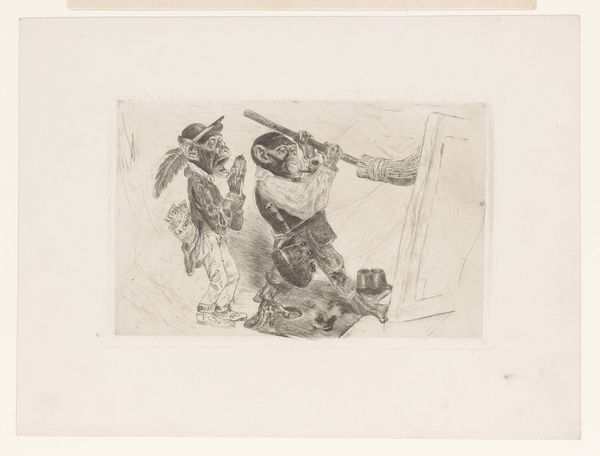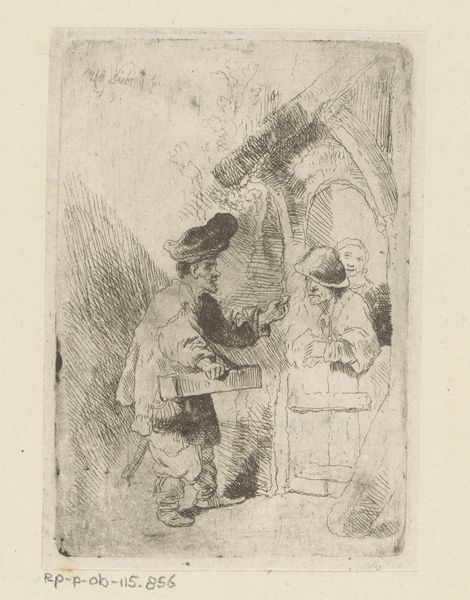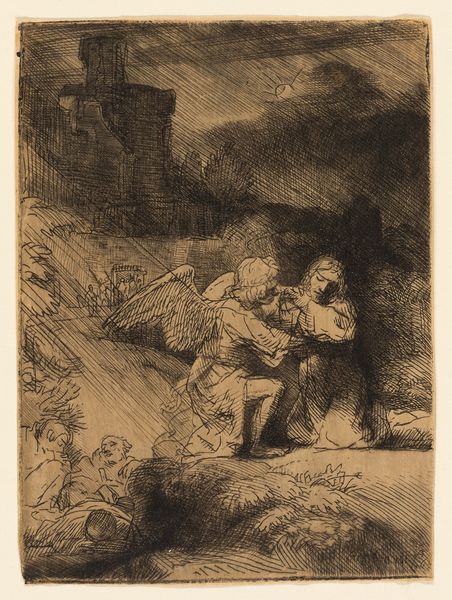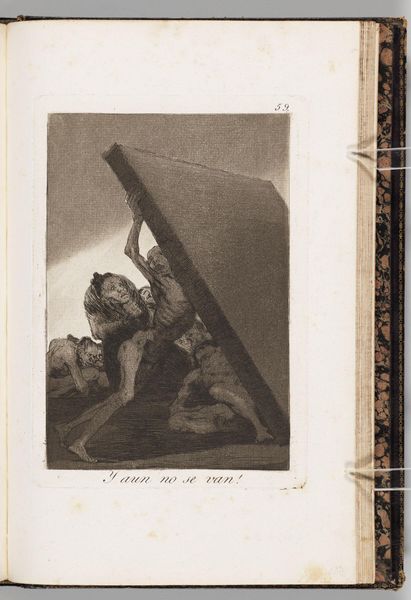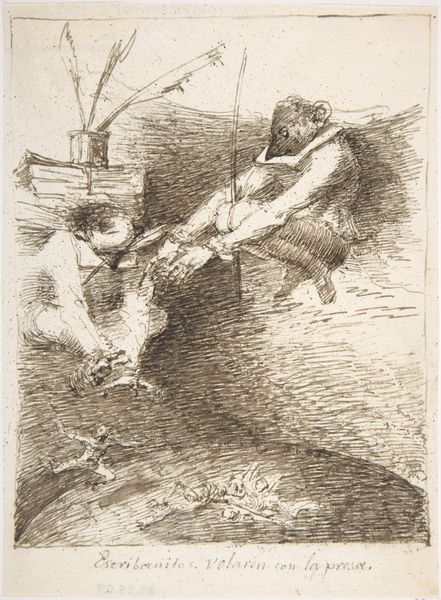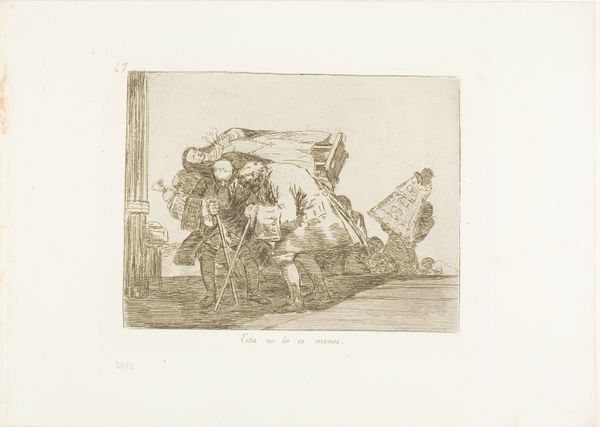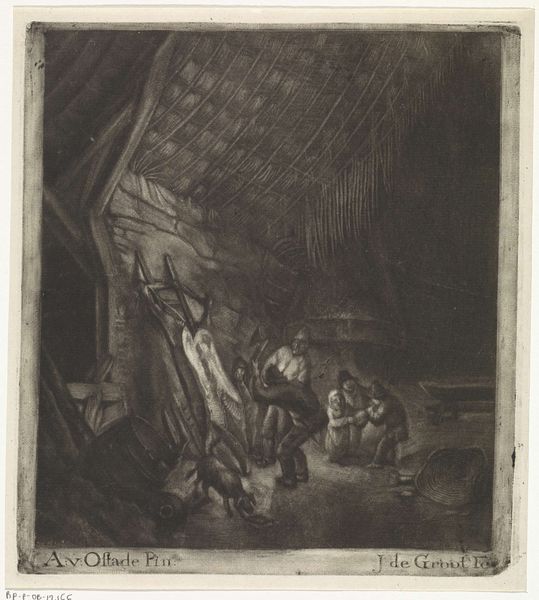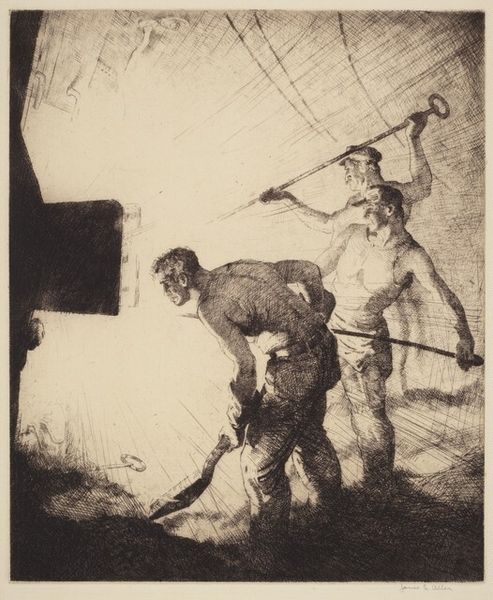
aquatint, print, etching, engraving
#
aquatint
#
narrative-art
# print
#
etching
#
figuration
#
social-realism
#
romanticism
#
history-painting
#
grotesque
#
engraving
Dimensions: 295 mm (height) x 195 mm (width) (bladmaal)
Curator: What a striking and disturbing scene. Goya created this print, "Og de er der stadig," or "And Still They Don't Go," between 1797 and 1798. It’s an etching, aquatint, and engraving – a potent blend of techniques he used often. Editor: It feels claustrophobic, doesn't it? Like you're trapped with these figures, pressed under some immense weight. The lack of distinct detail, especially in the large slab, adds to the oppressive mood. Curator: Absolutely. You feel the burden. The inscription at the bottom adds another layer – "Y aun no se van!" or "And still they don't go!" It suggests a lingering presence, perhaps a corrupt regime or an unwanted influence refusing to leave. It really emphasizes a feeling of stagnation. Editor: Right. And the figures themselves – they’re almost caricatures, grotesque even. Their emaciated bodies and distorted faces hint at suffering, resilience, and the sheer will to endure, framed, as always, through his sardonic lens. The romanticism mixed with his clear leanings toward social realism makes the political implications stark. Curator: The romantic elements come through in the focus on emotion and the sublime. But it’s definitely a dark, pessimistic romanticism, focused on the darker side of humanity, as history painting often veered at that time. I feel this piece resonates even today, with different oppressive structures still in play. Editor: It begs the question: Who or what are these figures clinging to? What exactly won’t leave? Power? Ideologies? Legacies? Goya forces us to confront the uncomfortable truths about power structures, social hierarchies, and the persistent echoes of history that shape our present. What I take away most, I think, is this constant resistance, where those who’ve already given everything still are unable to free themselves from their metaphorical captor. Curator: And Goya offers no easy answers, just this raw, unflinching depiction of struggle and persistence, even when all seems lost. It is haunting and affecting and, sadly, timeless. Editor: Agreed. It's a bleak image, certainly, but that commitment to endurance – to *still* be there – is perhaps the only spark of hope we can find.
Comments
No comments
Be the first to comment and join the conversation on the ultimate creative platform.
